It’s Easy to be Green!
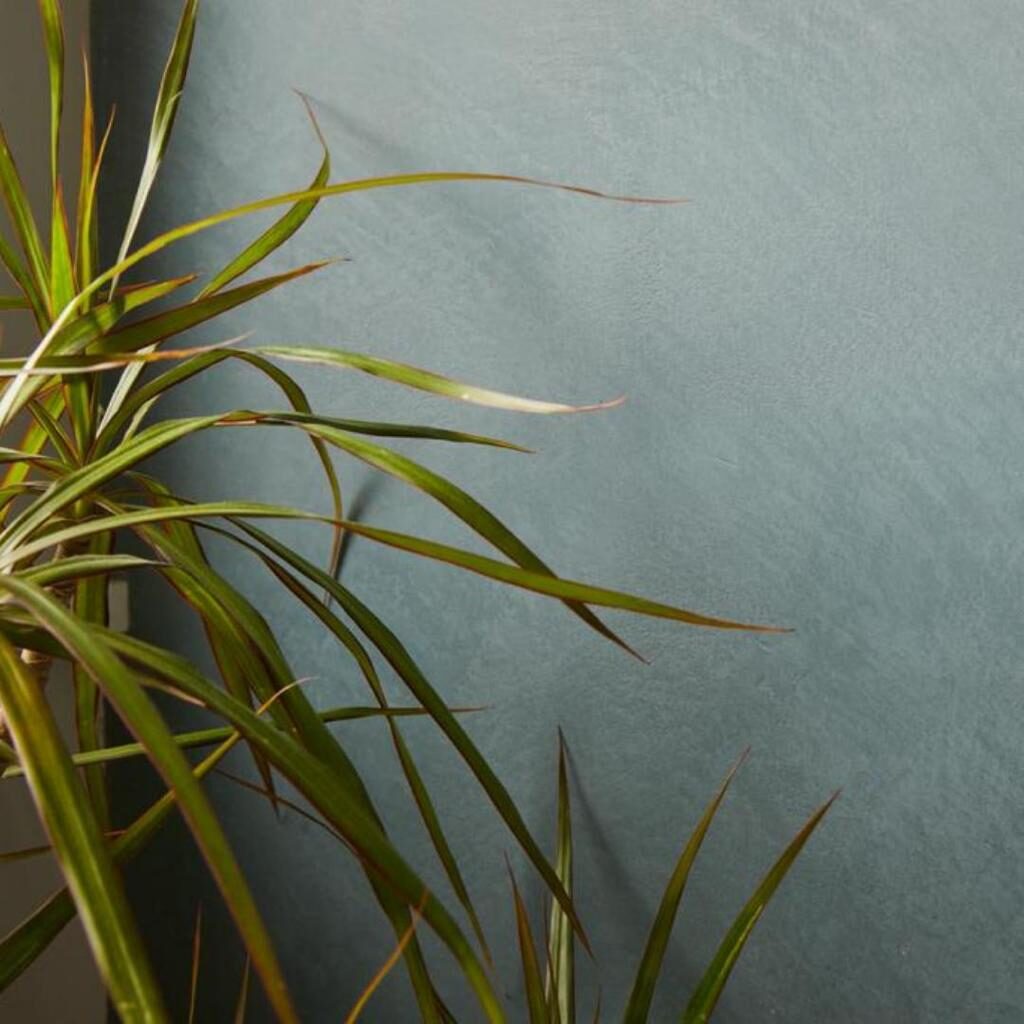
With growing awareness about our carbon footprints and the emphasis on doing our bit to save Mother Earth, people are increasingly looking for organic and eco-friendly alternatives in all walks of life. Every gesture adds up – small changes will make a big difference.
Eco-friendly paint now stock the shelves of our local DIY stores but what about the decorative finishes that we install? What are the green credentials? If you are wanting an eco-friendly sustainable solution, what is the best product to use? Which lime-based plaster is the most sustainable? Tadelakt? Venetian plaster? Pastellone?
Well, it’s good news – there is more than one available to you…
Lime-based polished plasters
Lime-based plasters are natural, non-toxic and breathable finishes with a low environmental impact. Made from an abundant and sustainable resource, they have obvious benefits for the environment, but also for human health as they can improve indoor air quality.
As lime does not contain any toxins or harmful chemicals, it does not release any harmful molecules into the air. It also absorbs CO2 from the air and stores it, improving air quality. It has natural anti-microbial properties making it resistant to bacteria and mould, and it allows moisture to evaporate, which in turn assists in balancing humidity levels. When sealers are applied, these materials become waterproof.
And lime-based plaster comes in a variety of guises….
Venetian Plaster
Despite its name, Venetian plaster was used in ancient Greece and Egypt and is one of the most natural eco substances you can use in your home. It comprises fired limestone mixed with water which creates a lime putty. It is a finish in its purest form since it has no aggregate mixed in, setting it apart from finishes such as tadelakt and marmorino. It is 100% natural. The application creates depth and a fluid textured effect, and it can be either highly polished or a more subtle finish.
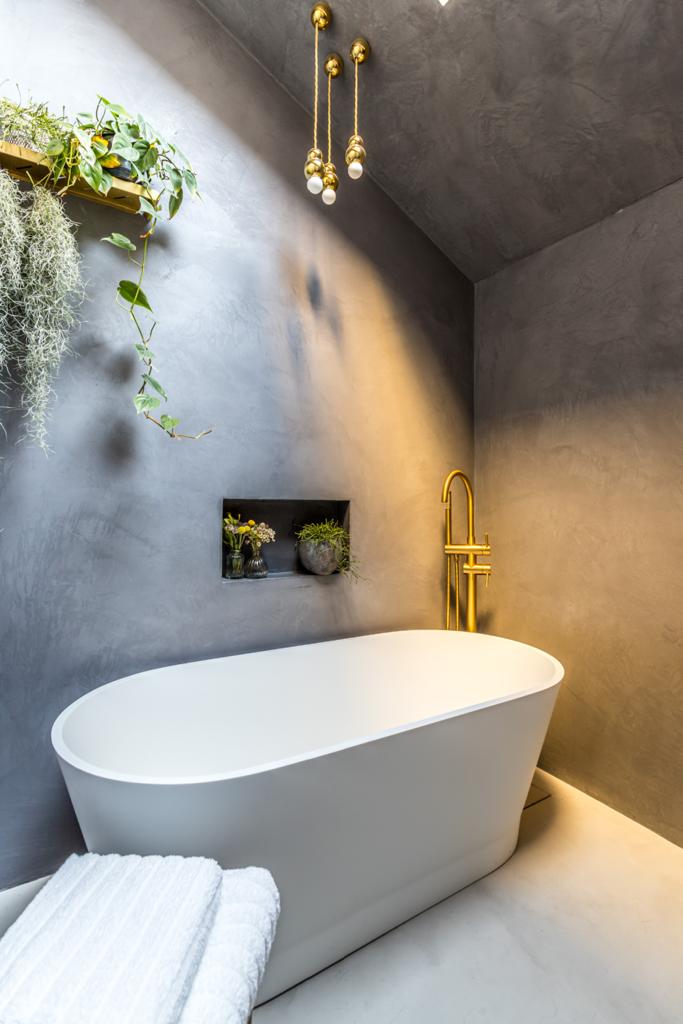
Tadelakt
Probably one of the most popular, tadelakt is a natural product in its very origins and an ancient craft, requiring true craftsmanship in its application. A traditional lime-based plaster originating in Morocco, tadelakt has been used as a domestic finish for thousands of years.
It offers a warm aesthetic and, being hand-applied, has a natural movement and organic texture to it. No two walls will be the completely identical creating a unique finish to your home. Once polished with the olive oil soap/waxes, it is water and mould resistant, durable and with its seamless finish has no cracks or crevices that attract dirt or mould, making it very popular for bathrooms. But it is such a versatile product and can be used as a feature wall in living space, envelope a bedroom in its warmth texture, or can be used outside to create a Mediterranean feel to any patio area.
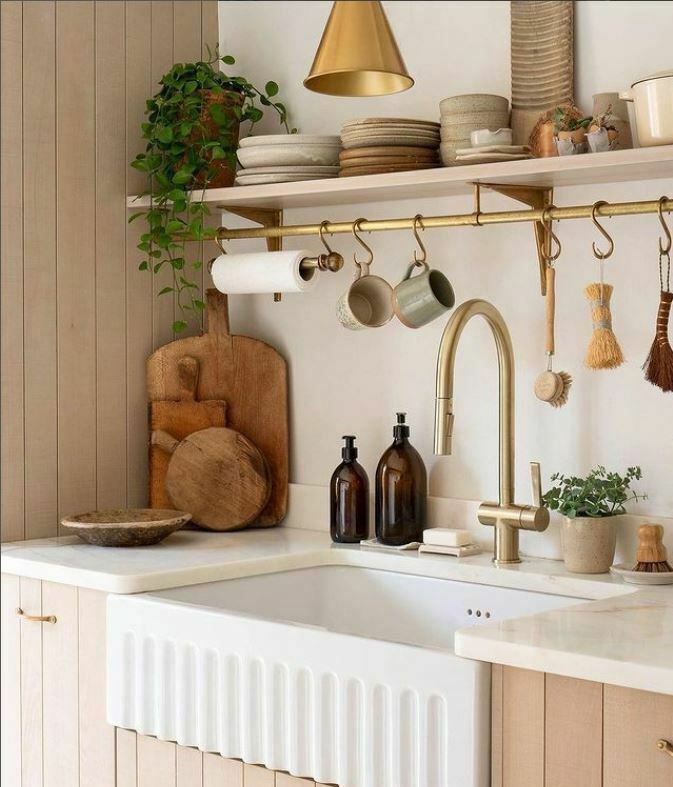
Tadelakt is a breathable surface. It doesn’t contain any harsh or toxic chemicals, unlike other products on the market, and it uses the minimum amount of energy in its production. It further lowers its carbon footprint by emitting 80% less CO2 than cement-based finishes as well as reabsorbing CO2 during processing, stopping the gas from escaping and damaging the environment.
And cleaning and maintenance sustains its green credentials, with no chemical cleaners necessary – in fact recommended – just wiping with water and recoating with a Marseille soap solution regularly to ensure its great condition stays intact.
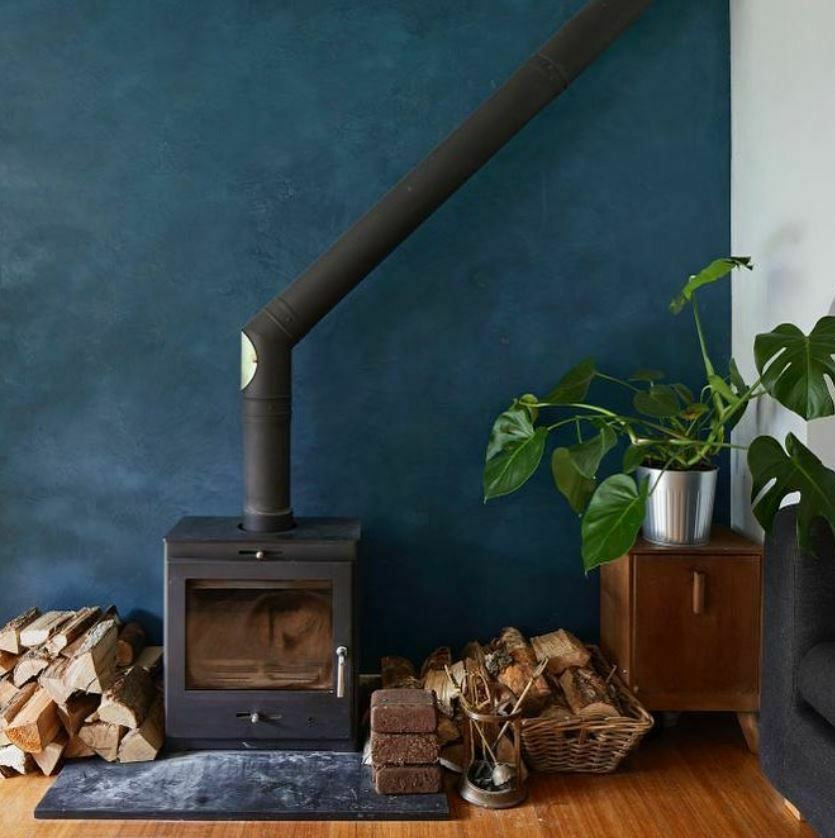
More brownie (or should that be greenie) points are gained when considering the long game with tadelakt. If you decide to dispose of it in future, it can be crushed and recycled into new mortars, due to its composition, and if you do throw it away rather than recycle it, it is totally biodegradable and will gradually sink back into the earth from where it came.
The only disadvantage of tadelakt (in our opinion) is whilst it is durable for walls, ceilings, vanity units, vanity tops, shelves and niches, it does not have sufficient resilience to be applied as a flooring.
But we may have a solution that can be used as the entire decorative finish for a room or in combination with the tadelakt…
Marmorino
Marmorino can also be known as Venetian plaster, with Italian origins dating to the Renaissance period and has been used in Venetian palaces for centuries – and it is still going strong. It differs from true Venetian plaster by being traditionally composed of ground marble, slaked lime and finished with natural beeswax. It comes in many colours and textures and is a wonderful light-reflecting surface finish. The sheen and texture creates an almost marble-like quality and feels very tactile to the touch.
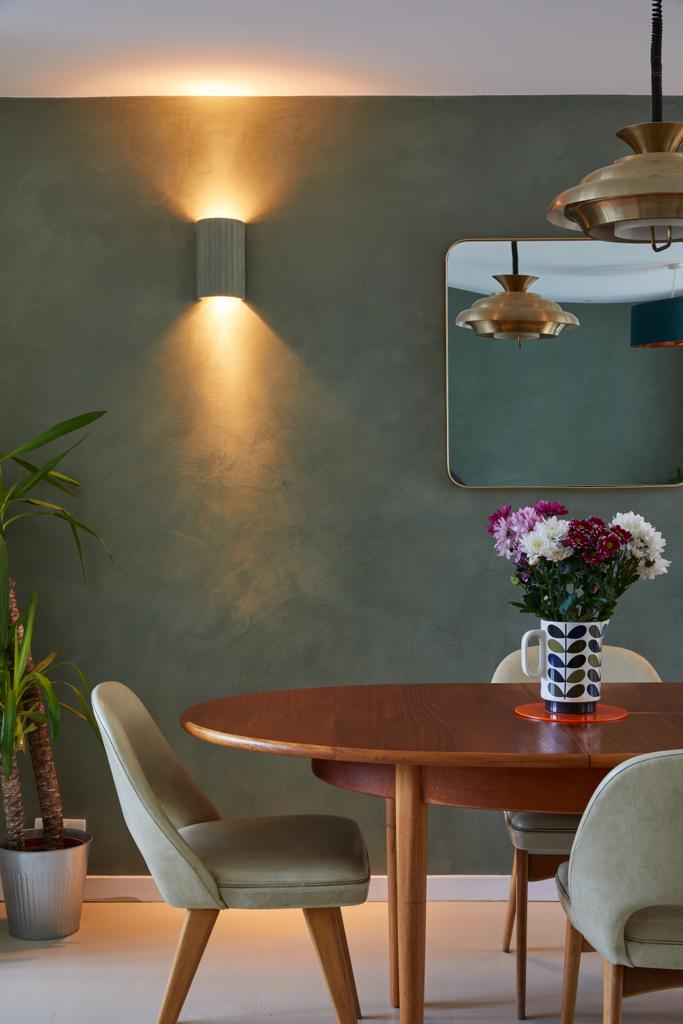
C Ferri Interiors were involved in this gorgeous marmorino project in Wimbledon. The elegant clean interior design was by decorbuddi who invited Carl to apply this beautiful natural finish to the living space and stairway: a perfect pairing of their crisp contemporary design with an organic traditional material.
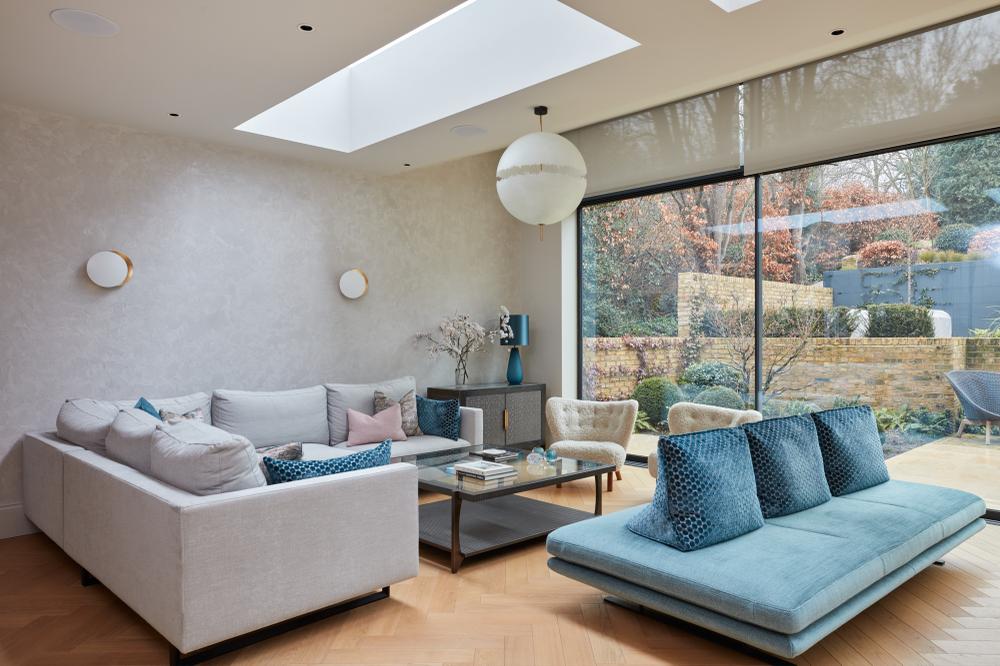
Using a coarse grain marmorino finished with an iridescent silver beeswax, this surface shimmers in natural and artificial light, showing off the warm and soft texture created by the hand application of this product.
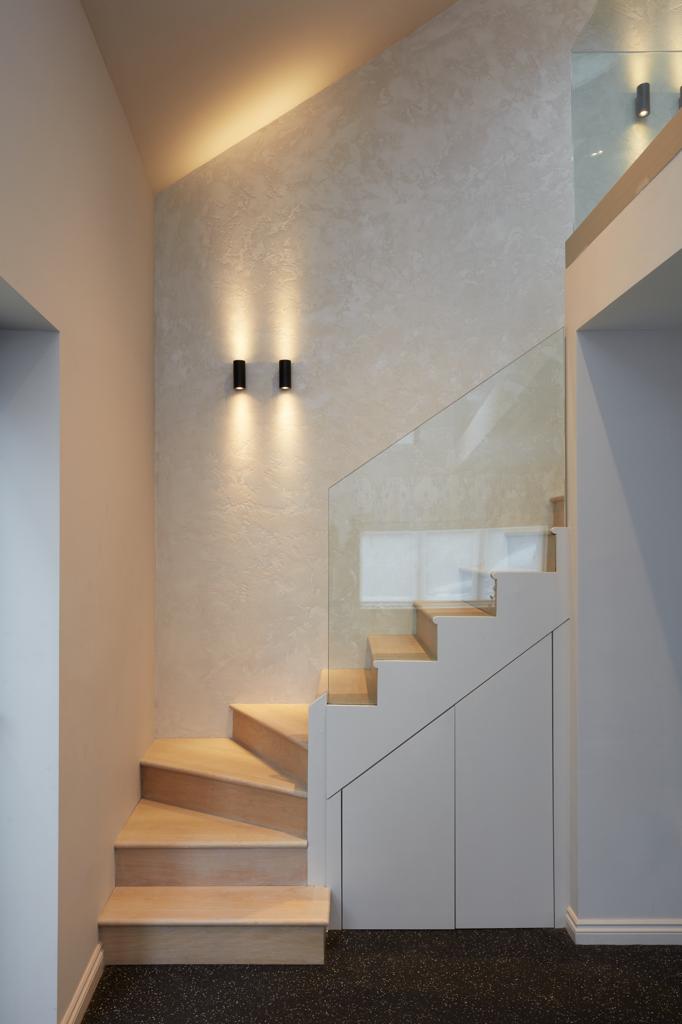
Pastellone
From the same stable as tadelakt, this is also a natural lime-based plaster product suitable for use on all surfaces including floors. The standard product is usually a combination of lime and cement-based plaster which gives it increased strength and durability. But the use of cement does count against it for the eco-credentials.
Recognising the drive for more sustainable and natural finishes, our supplier, Whitsons, now stocks and supplies a 100% natural version – Green Line Pastellone. Without compromising its strength and durability, the lime-based plaster is combined with selected marble powders and other natural ingredients (such as vegetable starches) to eliminate all chemicals and provide an entirely natural product. It remains a very adaptable material, suitable for interior and exterior walls, bathrooms, wet areas and internal floors. Again, hand applied ensures it has an organic but elegant appearance.
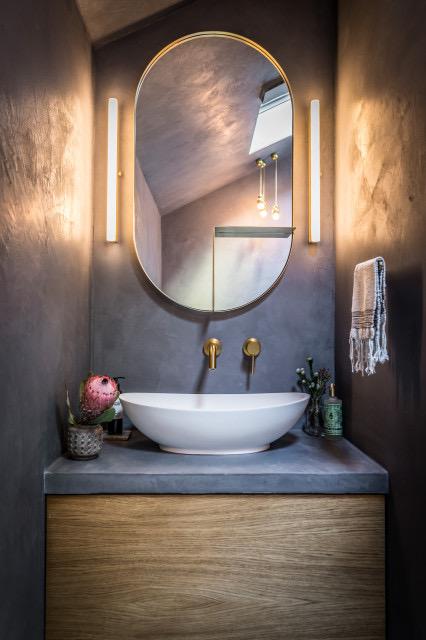
So if going green is something you are seeking to promote or pursue and you are thinking of having a sustainable eco-decorative plaster finish to your bathroom, be reassured – there are plenty of options to choose from – something for everyone!
For more in depth queries and to request a quotation fill in your details in our contact form. We’ll be in touch to discuss your requirements.
See more of our interior design projects and read the reviews of our happy clients on Houzz

Recent Comments